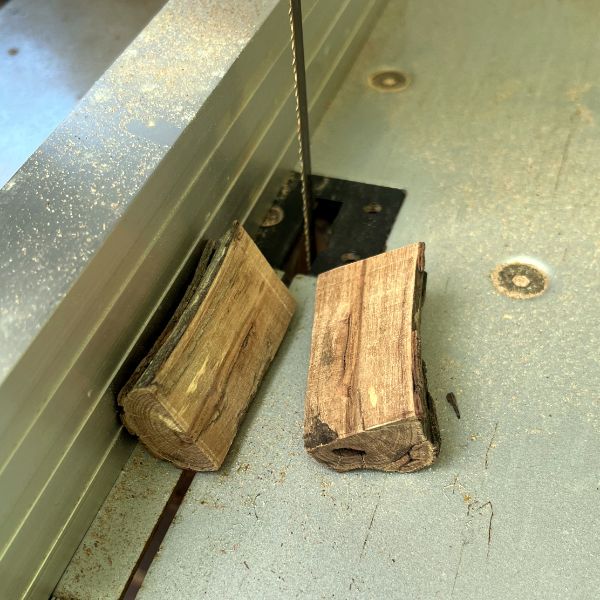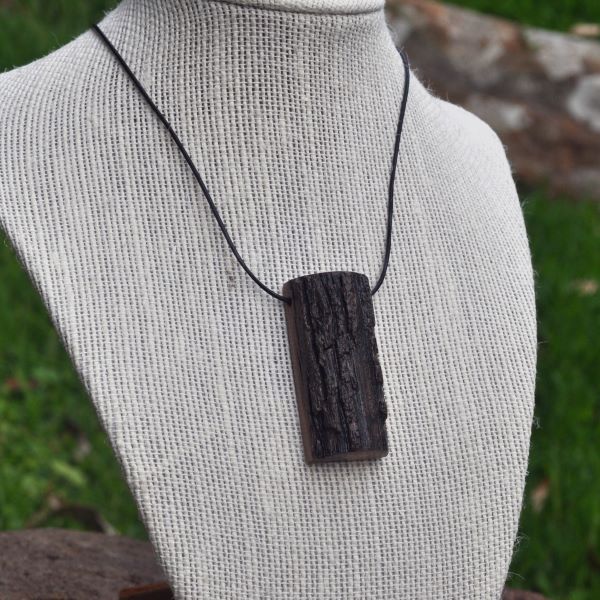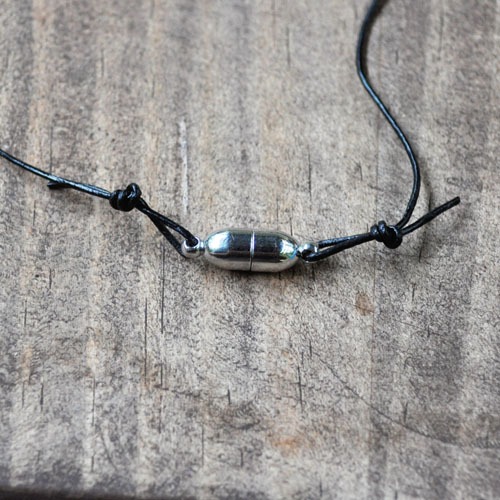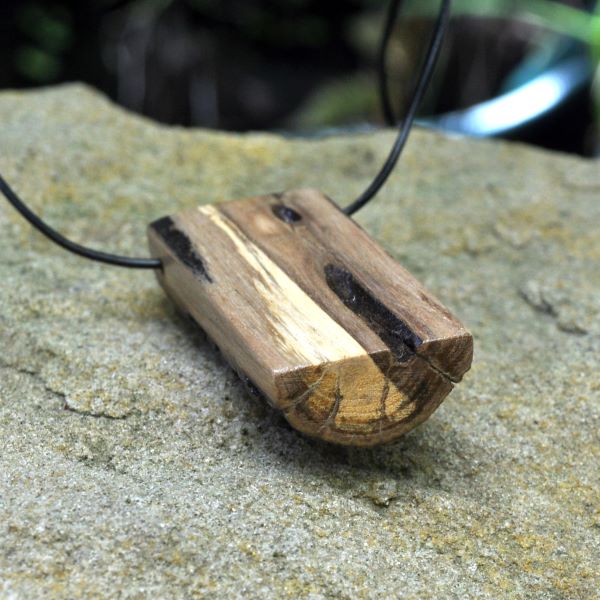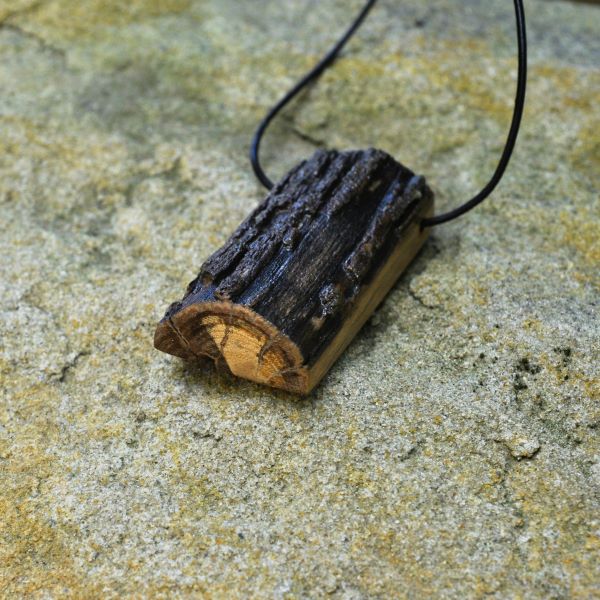A reversible pendant that not only looks good, but that also tells a story. Here, I explain the process required to make this chunky block wood pendant.
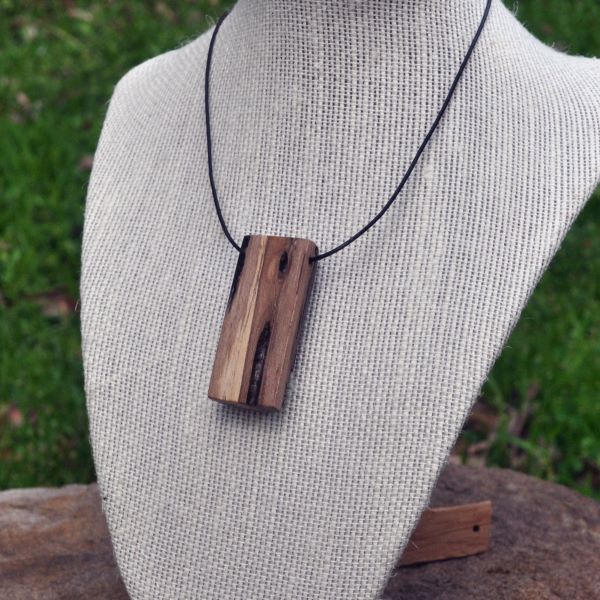
Materials
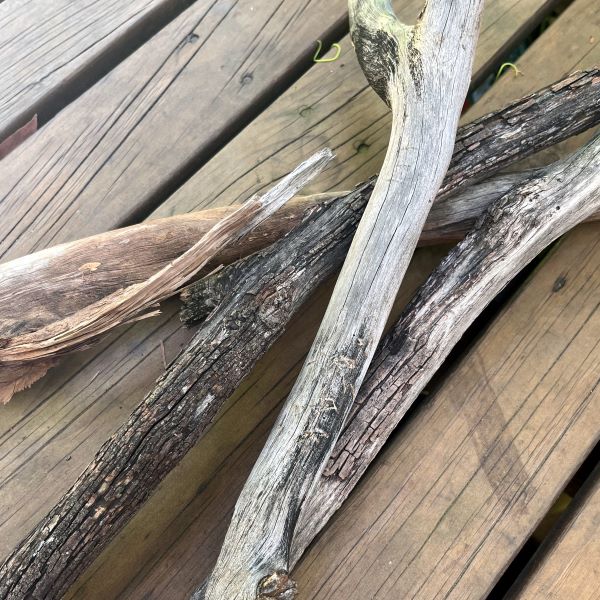
Here, we use the pieces of branch found by the road in Dubbo.
This post follows on from our road trip to visit the Taronga Western Plains Zoo which explains where the materials required for this piece were sourced.
You will also need a clasp and a length of 1mm leather cord about 45cm long to complete the necklace.
Step 1: Trim the branch
Start by cutting a four to five centimetre section of the branch before slicing the section in half. I use a small band saw to do this but a handheld rip saw will work just as well.
Step 2: Sand to size and drill
Next, sand the piece to size using a belt sander if you have one, otherwise a rough 80 grit sandpaper can be used.
You want to end up with edges around half a centimetre or so wide so that there is space to drill a hole for the cord.
Use a rotary tool or drill with a 1mm drill bit to drill right through one end of the block.
Step 3: Sand and finish
With the hole drilled, take a piece of 180 grit sandpaper and go over all the surfaces. Repeat this sanding process with 320 grit sandpaper to prepare all of the surfaces for painting.
Use a clear varnish to finish the piece off. Two coats are required. After the first coat has been allowed to dry, lightly sand with the 320 grit sandpaper to take off any lumps or bumps between coats.
Step 4: Finish the chunky block wood pendant necklace
After the second coat has dried, the pendant is ready to thread. Take a piece of 1mm leather cord and thread to through the hole.
If the hole is blocked by varnish, simply use the drill to clear it again.
Tie the magnetic clap to the ends of the cord to finish off.
The pendant tells a story
At the beginning of this post, I said that this pendant tells a story, so, what is it?
Well, looking at the different surfaces, we can get an idea of what has happened to this particular branch.
- We can see the growth rings showing us how long the branch was growing before it fell.
- The visible ant tunnels show that ant infestation is the likely reason behind the branch coming down.
- It is evident that the branch has been on the ground for a good amount of time due to the different colour patterns in the core wood.
Adding these things together we can see that this piece of wood has a 5+ year history behind it and that if not for the ants, it would likely still be growing.


